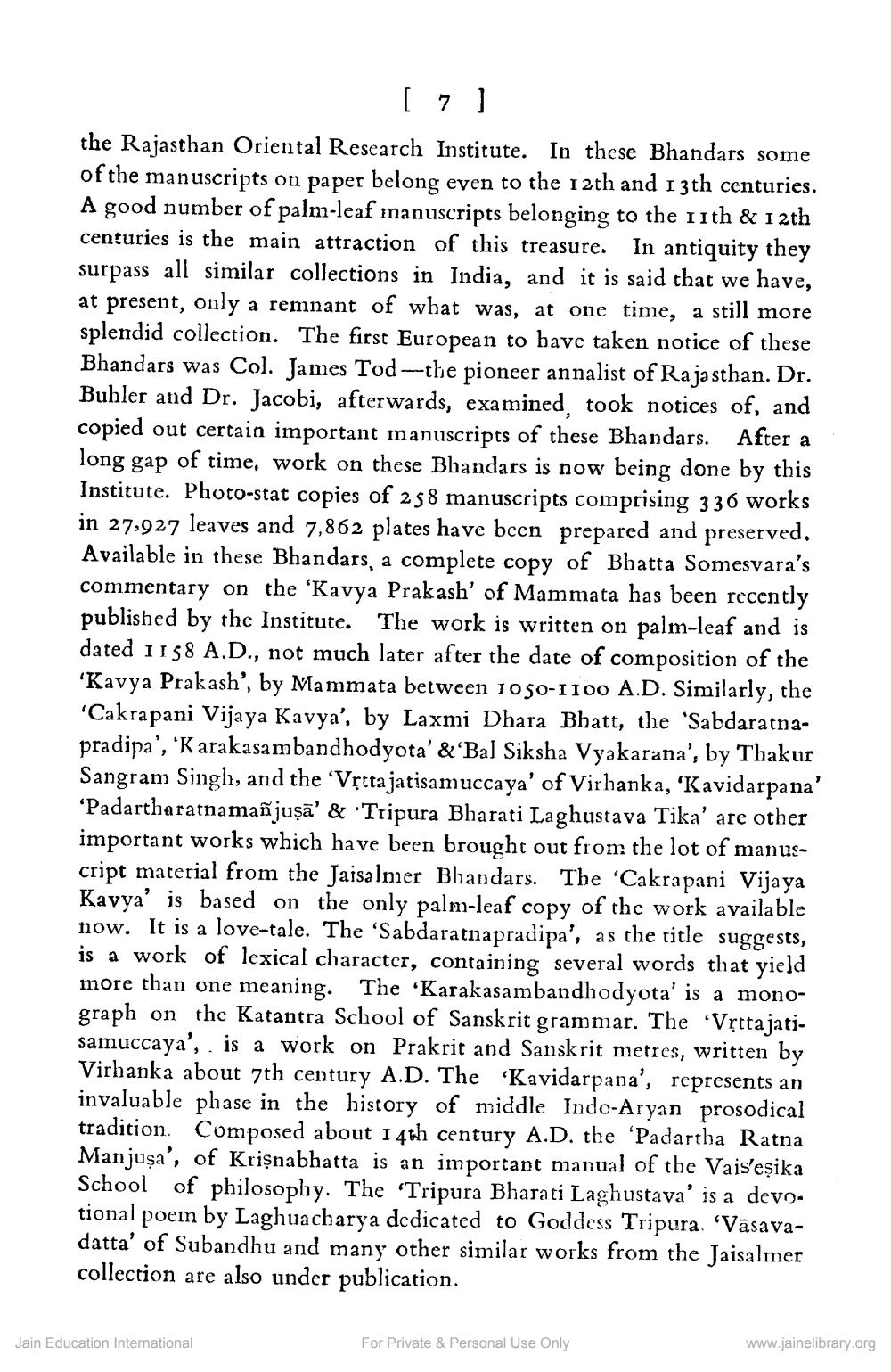________________
[ 7 ]
the Rajasthan Oriental Research Institute. In these Bhandars some of the manuscripts on paper belong even to the 12th and 13th centuries. A good number of palm-leaf manuscripts belonging to the 11th & 12th centuries is the main attraction of this treasure. In antiquity they surpass all similar collections in India, and it is said that we have, at present, only a remnant of what was, at one time, a still more splendid collection. The first European to have taken notice of these Bhandars was Col. James Tod-the pioneer annalist of Rajasthan. Dr. Buhler and Dr. Jacobi, afterwards, examined, took notices of, and copied out certain important manuscripts of these Bhandars. After a long gap of time, work on these Bhandars is now being done by this Institute. Photo-stat copies of 258 manuscripts comprising 336 works in 27,927 leaves and 7,862 plates have been prepared and preserved. Available in these Bhandars, a complete copy of Bhatta Somesvara's commentary on the 'Kavya Prakash' of Mammata has been recently published by the Institute. The work is written on palm-leaf and is dated 1158 A.D., not much later after the date of composition of the 'Kavya Prakash', by Mammata between 1050-1100 A.D. Similarly, the 'Cakrapani Vijaya Kavya', by Laxmi Dhara Bhatt, the 'Sabdaratnapradipa', 'Karakasambandhodyota' & Bal Siksha Vyakarana', by Thakur Sangram Singh, and the 'Vṛttajatisamuccaya' of Virhanka, 'Kavidarpana' 'Padartharatnamañjuṣā' & 'Tripura Bharati Laghustava Tika' are other important works which have been brought out from the lot of manuscript material from the Jaisalmer Bhandars. The 'Cakrapani Vijaya Kavya' is based on the only palm-leaf copy of the work available now. It is a love-tale. The 'Sabdaratnapradipa', as the title suggests, is a work of lexical character, containing several words that yield more than one meaning. The 'Karakasambandhodyota' is a monograph on the Katantra School of Sanskrit grammar. The 'Vṛttajatisamuccaya', is a work on Prakrit and Sanskrit metres, written by Virhanka about 7th century A.D. The 'Kavidarpana', represents an invaluable phase in the history of middle Indo-Aryan prosodical tradition. Composed about 14th century A.D. the 'Padartha Ratna Manjusa', of Krisnabhatta is an important manual of the Vais'eşika School of philosophy. The 'Tripura Bharati Laghustava' is a devo. tional poem by Laghuacharya dedicated to Goddess Tripura. 'Vasavadatta' of Subandhu and many other similar works from the Jaisalmer collection are also under publication.
Jain Education International
For Private & Personal Use Only
www.jainelibrary.org




